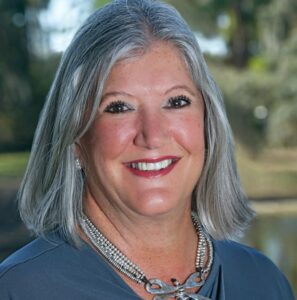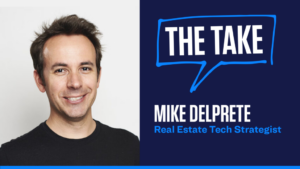Coach Lee Davenport talks to Richard and Leah Rothstein, bestselling authors of “Just Action,” about the proactive steps we can take to help legacy residents flourish in the face of gentrification.
 This January marks Inman’s fifth annual Agent Appreciation Month, which culminates at Inman Connect New York in a celebration of agents at the end of January. Plus, we’re rolling out the coveted Inman Power Player Awards, as well as the New York Power Brokers and MLS Innovators awards.
This January marks Inman’s fifth annual Agent Appreciation Month, which culminates at Inman Connect New York in a celebration of agents at the end of January. Plus, we’re rolling out the coveted Inman Power Player Awards, as well as the New York Power Brokers and MLS Innovators awards.
Did you hear about the comedian and actor Mike Epps buying the block in the neighborhood where his family was once evicted?
There was quite the X (formerly known as Twitter) conversation on Epps’ inspiring journey while it was trending over the holidays, ending 2023’s tumultuous real estate climate on a high and hopeful note. This is a refreshing, sensible celebrity trend (see this and this as examples) that ideally will gain more traction.
But here’s the thing: U.S. homeownership history (recent and bygone) has shown us that the simultaneous uplift of people and profits is not an automatic outcome. There must be Just Action, in the words of Richard and Leah Rothstein, to ensure profits do not come at the expense of people.
I have never doubted that some — dare I say many — real estate pros (from real estate investors to attorneys to mortgage brokers to sales agents) want to be beacons of housing hope while making a living (while others may not).
In other words, there are those of us who celebrate people and profits; they are not mutually exclusive to us. We celebrate the flourishing of haven homes for everyone in our communities, including (not exclusive to or absent of) ourselves.
The adage “People don’t care how much you know until they know how much you care” is deafening in our industry as copycat lawsuits continue to crop up. Thus, showcasing a more nuanced stance of “profits and people” that reinvests in legacy communities is essential to one’s personal career as well as community, creating improvement and distinction (as opposed to extinction).
2024 rebrand: Shedding the stigma
How can we, who make our “bread and butter” in the real estate industry, ensure people, particularly legacy residents, are not left out of the real estate equation?
[embedded content]
To answer this question, I spoke with Richard and Leah Rothstein, bestselling authors of Just Action.
According to the Rothsteins, the segregation of African American families and subsequent removal of resources resulted from unconstitutional government policy. Therefore, investment in those communities is called for.
The problem, however, is that this often leads to gentrification, “putting ‘profits before people’ as long-time residents of those neighborhoods are priced out by incoming tenants and homebuyers willing to pay a lot more to live there.”
The Rothsteins see the efforts of celebrities who “buy back the block” as “commendable,” in part because they’re ensuring that legacy residents of those areas are helped rather than forced out. However, well-meaning celebrities with deep pockets aren’t the only people who should be doing this work. As residents of our communities, we can advance fair housing goals as well.
Tenant advocacy
Possible tenant advocacy programs can include:
- Capping how much rents can rise each year
- Making just-cause eviction rules to ensure tenants can only be evicted for good reasons, such as failure to pay rent or massive property damage
- Starting right-to-counsel programs to provide those facing evictions with free legal representation.
Each of these policies can help ensure that long-time residents of African American communities can remain in their homes and benefit from increased investment.
[embedded content]
Land trusts
Another strategy to prevent displacement and create homeownership opportunities, the Rothsteins said, is through starting or supporting land trusts. These are community-led nonprofits that create permanently affordable homeownership and rental opportunities in areas where costs are rising rapidly.
This starts by acquiring vacant or unused land, sometimes through donations from the local government. The organization then fixes up the homes and sells them or rents them out at rates that are affordable.
In the case of sales, the land trust retains ownership and sells only the dwellings. It then restricts future prices on resales to keep prices attainable for lower and moderate-income households. Land trusts are working in more than 300 communities around the country, and residents in those communities can advocate with their local government for donations and support. Those communities without a land trust can support the implementation of one.
Down payment grants
Another example the Rothsteins cite of people-over-profit programs is down payment assistance programs, provided to long-time residents in gentrifying communities. These programs help to ensure that people can buy homes in their own neighborhoods, especially as they become more expensive.
Because of policies that segregated these areas and divested resources from them, the intergenerational wealth and capital access often doesn’t exist to allow residents to buy the homes they live in. With the help of down payment assistance programs, many can qualify for a mortgage and attain homeownership.
Assistance may take the form of a loan or grant, can come from cities or counties, or can come from private entities like banks or nonprofits. If each real estate agent donated just a fraction of their commissions to programs like these, we could narrow the black-white homeownership gap.
As you can see, there are so many actions we can take to minimize displacement when a previously under-invested area starts to see an influx of resources. We need the visionary actions of those like Mike Epps, and we need the methodical and incremental efforts of residents working together to take just action and change local policy. All are necessary. We just need to get started.
- SEO Powered Content & PR Distribution. Get Amplified Today.
- PlatoData.Network Vertical Generative Ai. Empower Yourself. Access Here.
- PlatoAiStream. Web3 Intelligence. Knowledge Amplified. Access Here.
- PlatoESG. Carbon, CleanTech, Energy, Environment, Solar, Waste Management. Access Here.
- PlatoHealth. Biotech and Clinical Trials Intelligence. Access Here.
- Source: https://www.inman.com/2024/01/15/this-mlk-day-its-time-to-put-people-over-profits/
- :has
- :is
- :not
- :where
- $UP
- 11
- 300
- 33
- 7
- a
- About
- absent
- access
- acquiring
- Action
- actions
- advance
- advocacy
- affordable
- African
- Agent
- agents
- All
- allow
- American
- an
- and
- annual
- answer
- appreciation
- ARE
- AREA
- areas
- around
- AS
- Assistance
- At
- attain
- Attainable
- authors
- Automatic
- awards
- back
- Banks
- BE
- because
- become
- before
- benefit
- bestselling
- broker
- brokers
- buy
- Buying
- by
- called
- CAN
- capital
- capital access
- care
- Career
- case
- celebrate
- Celebration
- celebrities
- Celebrity
- change
- Cities
- Climate
- come
- commissions
- Communities
- community
- community-led
- Connect
- content
- continue
- Conversation
- Costs
- could
- country
- coveted
- create
- Creating
- crop
- day
- deep
- displacement
- distinction
- do
- Doesn’t
- doing
- donated
- donations
- Dont
- down
- each
- efforts
- embedded
- end
- ending
- ensure
- ensuring
- entities
- especially
- essential
- estate
- everyone
- example
- examples
- Exclusive
- exist
- expensive
- extinction
- Face
- facing
- Failure
- fair
- families
- family
- fifth
- fixes
- flourish
- flourishing
- follow
- For
- forced
- form
- formerly
- fraction
- Free
- from
- future
- Gain
- gap
- get
- Go
- Goals
- good
- Government
- Government policy
- grant
- Have
- haven
- hear
- help
- helped
- her
- High
- his
- holidays
- Homes
- hope
- hopeful
- households
- housing
- How
- However
- http
- HTTPS
- i
- ideally
- if
- implementation
- improvement
- in
- include
- Including
- Incoming
- increased
- incremental
- industry
- influx
- innovators
- inspiring
- investment
- Investors
- IT
- January
- journey
- just
- Keep
- Know
- known
- Land
- Lawsuits
- Leads
- Lee
- left
- Legacy
- Legal
- Licensed
- like
- live
- living
- loan
- local
- Local Government
- Lot
- lower
- make
- Making
- many
- massive
- May..
- methodical
- mike
- minimize
- MLS
- more
- Mortgage
- much
- must
- mutually
- necessary
- Need
- never
- New
- New York
- nonprofits
- note
- of
- often
- on
- once
- ONE
- only
- opportunities
- opposed
- or
- organization
- Other
- our
- ourselves
- out
- Outcome
- over
- own
- ownership
- part
- particularly
- Pay
- payment
- People
- permanently
- personal
- plato
- Plato Data Intelligence
- PlatoData
- player
- plus
- pockets
- policies
- policy
- power
- prevent
- previously
- Prices
- private
- Proactive
- Problem
- profits
- Programs
- property
- PROS
- provide
- provided
- put
- qualify
- question
- quite
- rapidly
- Rates
- rather
- real
- real estate
- reasons
- Rebrand
- recent
- remain
- removal
- Rent
- representation
- residents
- Resources
- resulted
- retains
- Richard
- Rise
- rising
- Rolling
- rules
- s
- Said
- sales
- say
- see
- segregated
- Sells
- should
- showcasing
- shown
- simultaneous
- So
- some
- sometimes
- stance
- started
- Starting
- starts
- Steps
- Strategy
- subsequent
- such
- support
- Supporting
- Take
- Talks
- tenant
- than
- that
- The
- their
- Them
- then
- There.
- therefore
- These
- they
- thing
- this
- those
- Through
- Thus
- time
- to
- together
- traction
- Trend
- trending
- Trust
- Trusts
- unconstitutional
- until
- unused
- Uplift
- us
- Video
- visionary
- Visit
- want
- was
- we
- Wealth
- WELL
- when
- which
- while
- WHO
- will
- willing
- with
- without
- words
- Work
- working
- X
- york
- you
- youtube
- zephyrnet












